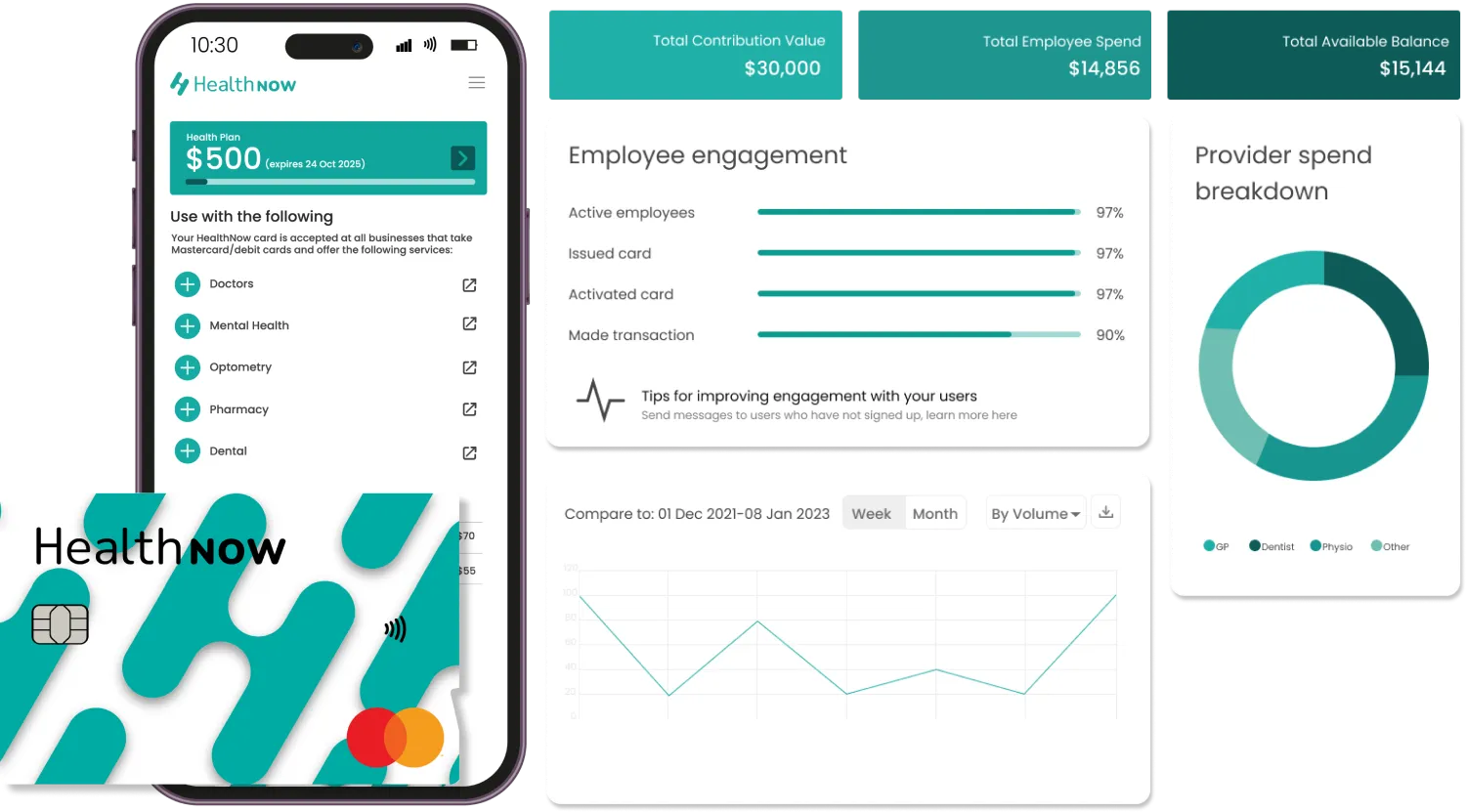New Zealand’s current job market is still seeing employers face fierce competition for skilled workers across the board. The low unemployment rates (3.6%), high labour force participation (72.4%), and robust wage growth have put job seekers in the driver’s seat, with numerous job options and a strong inclination toward roles that not only offer the right remuneration, but also come with premium benefits and flexibility that supports the overall wellbeing of jobseekers. This means that to remain competitive and attract and retain the right team, employers have now realised the importance of offering benefits that prioritise employee health and well-being in a way that offers autonomy. This is where HealthNow comes in. HealthNow is a unique and innovative solution designed to address the challenges faced by companies by supporting the health needs of employees in a way that is meaningful and attractive to them. So what should employers be considering when looking at their employment and retention strategies?
It’s a competitive job market out there
Over recent years, the job market has been characterised by record-low unemployment rates and impressive wage growth, with wage cost inflation currently sitting at 4.3%. The labour force participation rate has also reached the highest levels since the Household Labour Force Survey (HLFS) began in 1986, driven in part by an influx of migrant workers. The result is a competitive landscape that presents challenges for employers: they are struggling to fill vacancies (both promptly and even over 6-month periods), facing skill shortages, and witnessing employees actively seeking new roles with higher salaries, and more enticing perks and benefits that better complement their desired lifestyles and personal goals.
It’s time for higher wages and greater benefits
Despite the challenges brought by the economic recession, wage and salary growth has remained fairly robust. Median weekly and hourly earnings have seen significant increases. Minimum wage adjustments, while not the primary driver of wage growth, have contributed to employees’ improved financial well-being. With a high cost of living and Kiwis looking to get ahead financially at every corner, this means that benefits (alongside wages) are now a key point of focus that has the power to make or break whether a role gets filled or passed over, a decision that has large financial and time implications for any employer with staffing vacancies.
There’s a definite brain drain
While New Zealand has re-opened its borders to overseas workers, a concerning trend known as the “Australasian Brain Drain” is continuing on. Local workers are leaving the region in search of opportunities in countries with lower living costs, driven by high inflation and interest rates in NZ. This net migration loss is exacerbating our skill shortages across the country, even despite the arrival of migrant workers helping to alleviate the issue.
Could the job market be stabilising?
Currently, trends are showing that the average weekly working hours are declining slightly, and the overall labour demand has slightly softened. As a result, online job advertising has also seen a slight decrease. These factors could suggest that the market may be cooling down, offering employers an opportunity to implement strategies that better meet their employees’ needs, particularly as more market stability may occur as we move into 2024.
Employers are facing a range of challenges
The state of the tight labour market presents several challenges for employers, including:
- The time taken to hire a new staff member is much longer: hiring times have extended due to limited talent pools, making it difficult for employers to fill vacancies promptly. The result has been rising hiring costs.
- Skills shortages are having an impact: despite the influx of skilled migrant workers, a significant percentage of employers are still grappling with skill shortages. This has prompted businesses to offer competitive salaries and benefits to attract and retain talent.
- Employees are looking elsewhere: the lure of higher salaries and better benefits has caused employees to actively seek alternative job opportunities, or at least explore what could be on offer. This increased job mobility and curiosity for other potential opportunities (with potentially more attractive benefits) poses a challenge for employers in terms of retaining their team, and then hiring new staff in the current labour market.
HealthNow: A Solution For Employers And Employees
Amidst these labour market challenges, HealthNow emerges as a game-changing solution – offering employees something they desire in terms of their health benefits: financial benefits with autonomy that support an employee’s personal health and well-being goals.
HealthNow payments represent funds allocated by employers annually for their employees’ health and medical expenses – to be spent in the ways that the employees choose. This innovative approach provides employees with autonomy and control over their healthcare decisions while ensuring financial support from their employer.
How HealthNow works:
- For employers: employers set the monetary limit available to employees and select approved service sectors for their employees to choose from – such as physiotherapy, dentistry and the like. Once set, employees can access healthcare providers across Australia and New Zealand within these approved categories, offering location flexibility, even when on international travel. HealthNow handles vendor management, reducing administrative burdens to employers. Employers gain insights into how employees use their funds, giving them valuable insight into how to better support employee wellness in the future.
- For employees: employees receive their allocated funds in a dedicated online health wallet within the HealthNow app. They can use these funds for approved health services, simplifying payments through a dedicated HealthNow payment card – no reimbursement or insurance paperwork needed. Employees have control over accessing services and locations, enabling proactive health management.
Companies that have adopted HealthNow as a healthcare benefit report increased healthcare accessibility for their team, faster return-to-work rates, and lower rates of presenteeism and absenteeism. They consider HealthNow to be an attractive benefit in their salary package, supporting acquisition and retention too.
You can read more about navigating the current job market as an employer, as well as understanding what you can do to best support your existing and future staff while supporting your hiring and retention processes by reading this.







